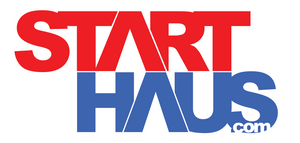A question we get a lot at the Start Haus, both in-store and online, is "What's the best way to find new ski boots?"

There are a lot of ways to go about it, including the “shotgun” method of just trying on everything in sight. We don’t like that approach, however, because there are generally 3 to 4 boots - at the most - that will provide the best fit. Trying on 10 is often counterproductive to finding the best one. Finding out what those few “ideal” boots are is our job.
How we go about finding that boot is what the legacy of years of bootfitting has brought to Start Haus.
We have to evaluate three things before we bring out a boot for you: One is the foot shape, two is the skier type, and three is the skier’s expectations.
In many respects, the third is the most important factor. We say this because some skiers are going to want a firm, supportive fit while others are going to want a softer, cushier feel. Either way is fine as long as the cushy fit does not devolve into “roomy," which also means "sloppy."
When we first sit down with a customer, we evaluate the foot for size, width, general mass, and possible problems associated with bone spurs, bony ankles and other factors.
We also are going to try to get a handle on what type of fit you want.
When you try on boots, you should use a very thin sock, and use some form of supportive device underfoot. A good footbed is the foundation of a good fit, and one that is custom made for your specific foot is the best.

An aftermarket device like a Superfeet “trim to fit” often quite acceptable.
The stock footbed that comes with most boots, however, is worthless, and we strongly advise against using them.
First, we’ll ask you to put your foot in the empty shell (no liner) and we’ll evaluate your shell fit.
Slide your foot forward in the empty shell so that the toes are just at the front. We are looking for about ¾” of room behind the heel, and we’ll also evaluate whether the bony areas on your foot may cause problems.
Assuming the model and size selection is close to right, we expect that you will feel that the foot is firmly wrapped all around on all sides, and that you have a small amount of wiggle room for your toes.
It’s okay if the toes touch the end of the liner, and we expect that they usually will. The key fit areas are the heel/ankle circumference and the instep and those areas should be snug and firm.
When you try on 2-3 boots in the same fit category, they will all feel subtly different. None are better than the others, but those subtle differences are the key.
If you have a large bunion or a really bony ankle, don’t expect the boot to fit those areas out of the box. If they do, you might be in the wrong size or shape of boot.

Proper boot fitting is not rocket surgery. If you are in the right shell, you’ll find the desired degree of snugness vs. comfort and that will guide your choice.
Your bootfitter can help advise these choices with you. If you don’t rely on a good bootfitter, you may end up in a boot that’s “comfy” but the wrong size or shape, ultimately becoming loose, sloppy and uncomfortable over time.
Taking the time and working with a quality boot fitter is arguably the most important thing you can do, gear wise, for your skiing experience, over the skis and bindings themselves. So give us a call and set a boot fitting appointment today.

